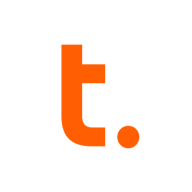

Teradata and Equalum compete in the data processing and integration category. Teradata appears to have an advantage in scalability and robust analytics, while Equalum is more user-friendly with real-time integration capabilities.
Features: Teradata excels in parallel processing, scalability, and robust analytics, with advanced query management. It offers security features and high performance for large-scale data warehousing. Equalum stands out with no-code CDC replication, streaming, and batch ETL, integrating Kafka and Spark for fast data processing.
Room for Improvement: Teradata faces high costs, cloud adaptation issues, and limited unstructured data handling. It requires better licensing flexibility and big data platform integrations. Equalum needs enhanced connector support, improved documentation, and advanced deployment strategies.
Ease of Deployment and Customer Service: Teradata offers diverse deployment options, mainly on-premises, with highly rated customer service but varying technical support response times. Equalum provides simpler deployment and robust support, with high customer satisfaction and quick service.
Pricing and ROI: Teradata is expensive but offers high-end performance, suitable for large enterprises, with flexible pricing models like subscription and pay-as-you-go. Equalum, although higher priced than local CDC tools, is competitively priced against global ETL vendors, delivering strong ROI through time savings and efficiency.

Equalum is a fully-managed, end-to-end data integration and real-time data streaming platform, powered by industry-leading change data capture (CDC) tech and modern data transformation capabilities (streaming ETL and ELT). Equalum's enterprise-grade platform features intuitive UI allowing you to build robust, real-time data pipelines in minutes.
Teradata is a scalable data analytics platform designed to meet enterprise demands for large-scale data management and processing, focusing on performance, scalability, and security for complex query executions.
As a leading data warehousing solution, Teradata integrates advanced analytics enabling organizations to derive insights from massive datasets. It supports high-volume data workloads with its architecture optimized for analytical queries. Users benefit from its robust scalability, allowing seamless expansion as data grows. Teradata's SQL engine is compatible with a wide range of data types, ensuring flexibility in data analysis. With advanced security measures, it protects sensitive data across various environments, providing peace of mind to users handling critical information.
What are the most important features of Teradata?Teradata is widely used in industries like finance, telecommunications, and healthcare, where data-driven decisions are critical. Companies leverage its robust analytics capabilities to enhance customer experiences, streamline operations, and ensure compliance with regulatory requirements. In these sectors, quick access to data insights can significantly impact competitive advantage.
We monitor all Data Integration reviews to prevent fraudulent reviews and keep review quality high. We do not post reviews by company employees or direct competitors. We validate each review for authenticity via cross-reference with LinkedIn, and personal follow-up with the reviewer when necessary.